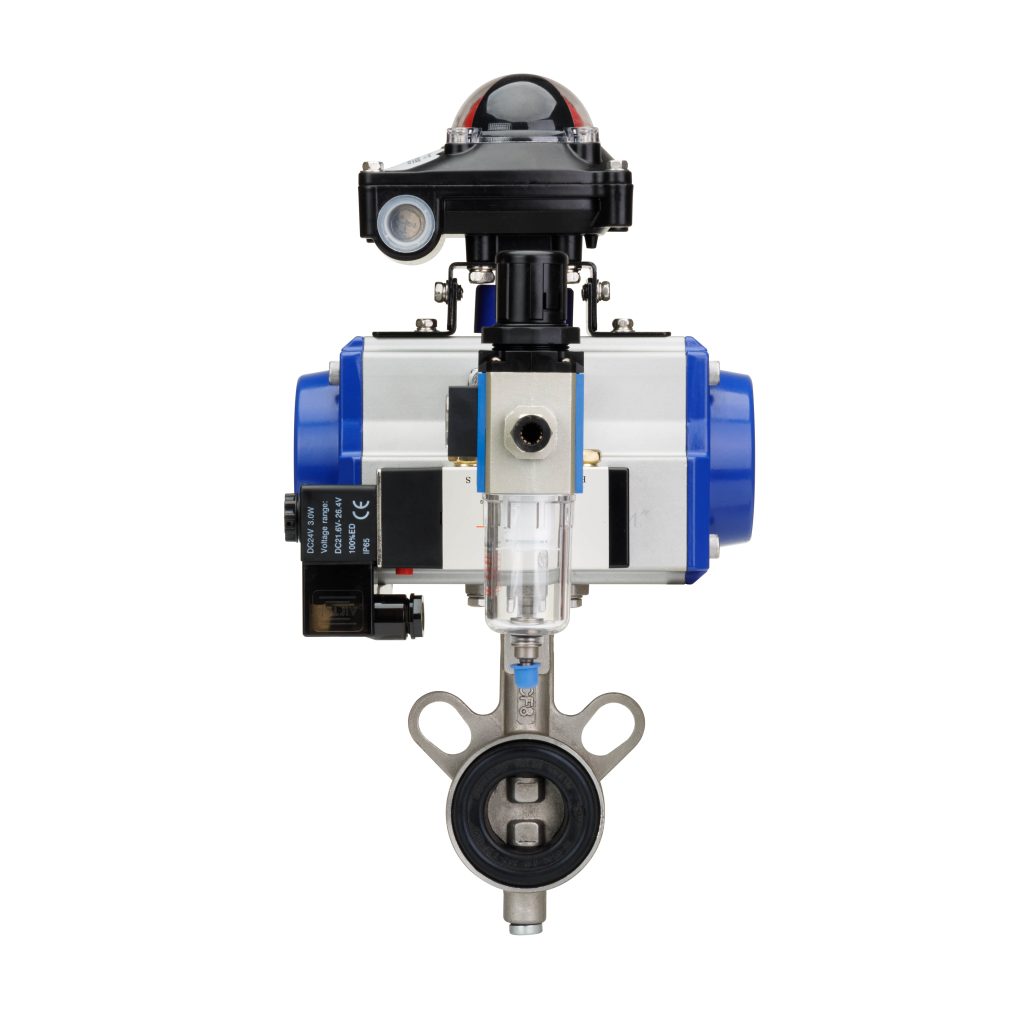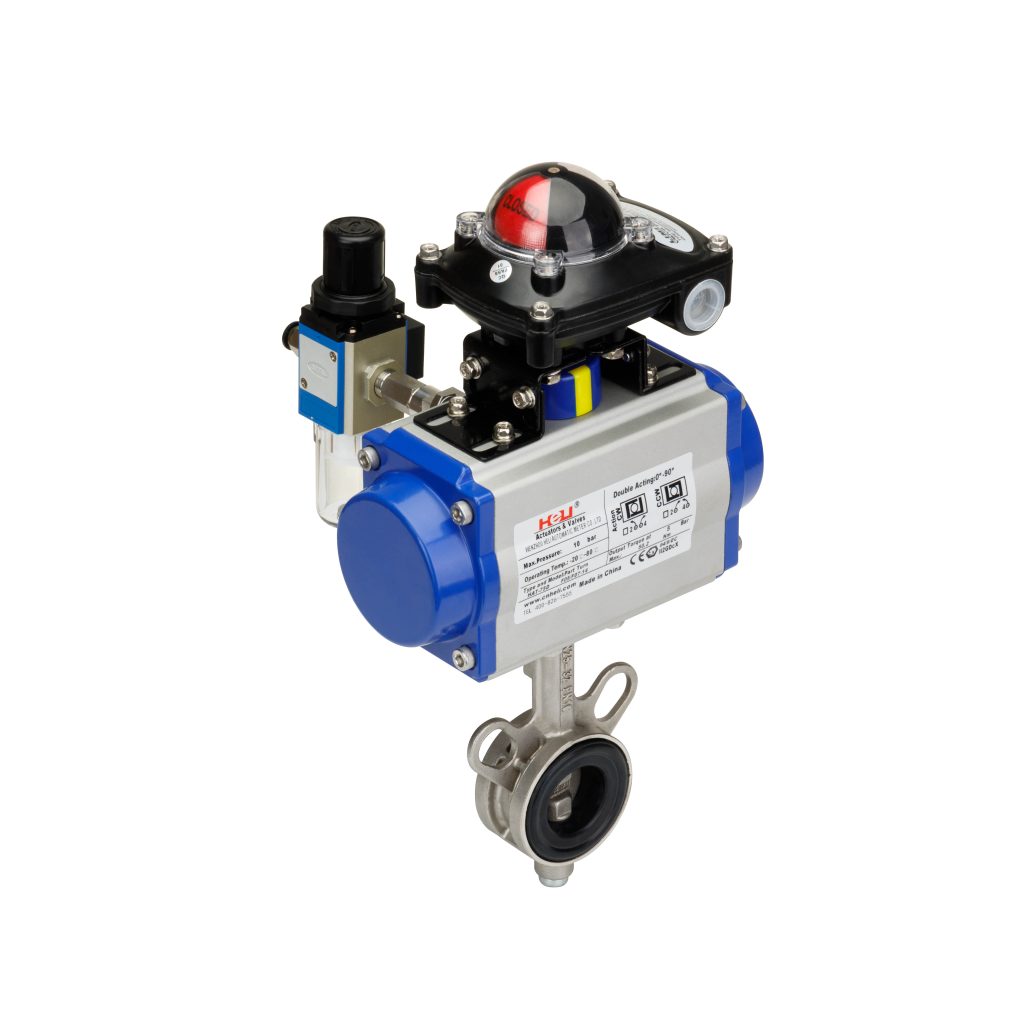A pneumatic butterfly valve is a critical component in various industrial applications, primarily used for controlling the flow of liquids, gases, and other substances. It combines the simplicity and efficiency of a butterfly valve with the power and precision of pneumatic actuators. This article will explore the design, working mechanism, applications, and advantages of pneumatic butterfly valves, helping readers understand their importance in modern industrial systems.

What is a Pneumatic Butterfly Valve?

A pneumatic butterfly valve consists of a circular disc (or “butterfly”) that rotates to control the flow of media through a pipeline. This valve type uses pneumatic actuators, which are powered by compressed air, to open, close, or regulate the flow. The actuator is connected to the valve stem, and as the actuator receives air pressure, it rotates the disc inside the valve body to either restrict or allow the flow of the medium. The key feature of a pneumatic butterfly valve is its quick operation, thanks to the pneumatic actuator. These valves are typically smaller and lighter compared to other valve types, which makes them highly effective in situations where space or weight limitations are a concern.
